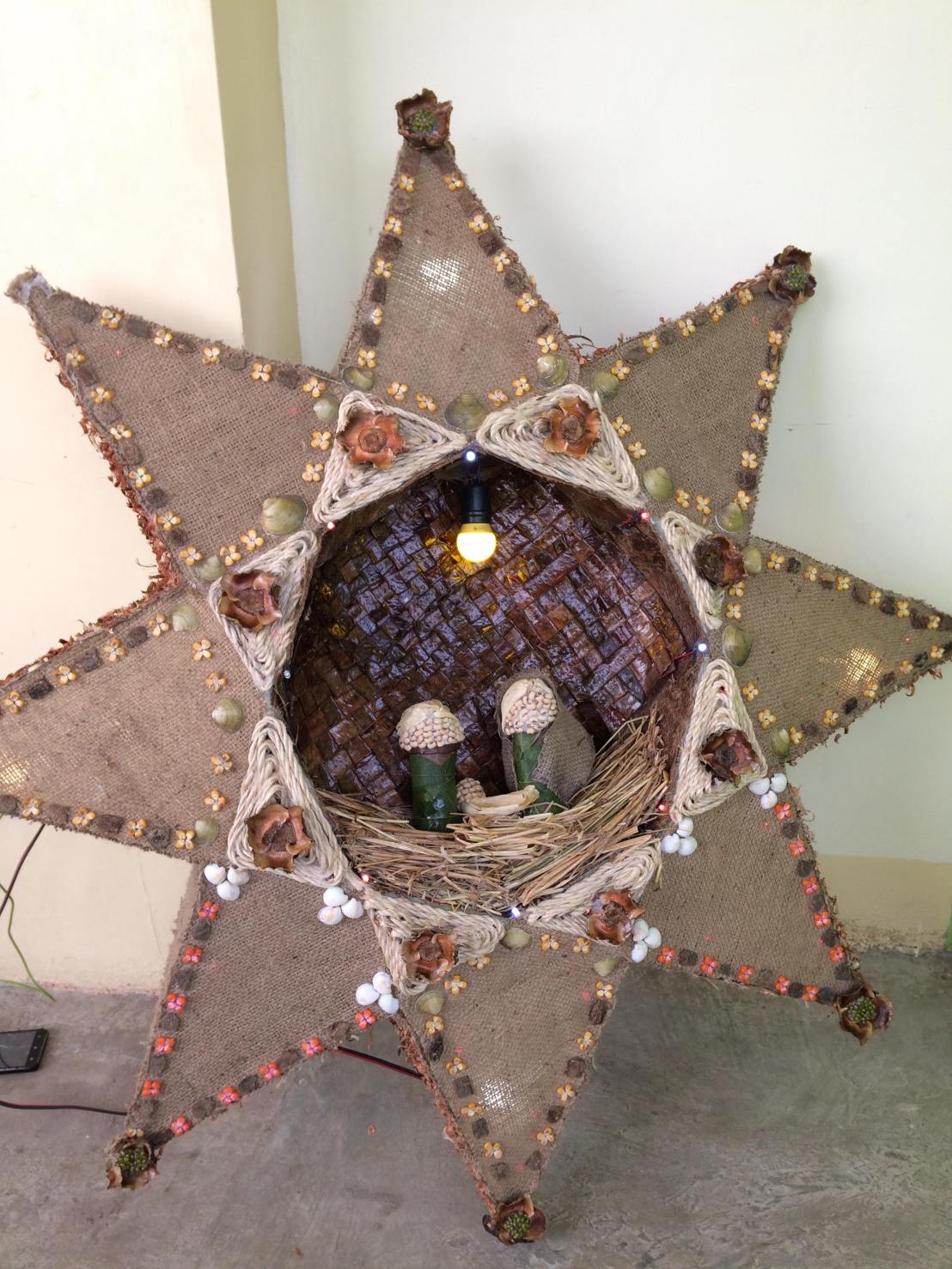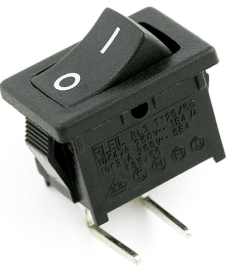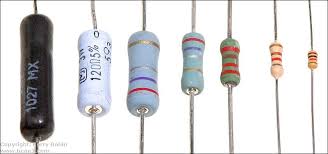The Culture in Christmas

One of the most anticipated and awaited event of the year is Christmas. In connection to this, we were tasked to make a Parol which is known to be a symbol for the Christmas hearts and spirits of Filipinos.
The parol that we made were mostly made up of indigenous materials like abaka twine, string beans, coconut stalk, shells, corn kernel, bark and mungo beans. Due to that, this parol truly reflects both the preserved and evolving culture and tradition of Filipinos.
On the part of physics, we were tasked to put a circuit to the parol. In our circuit,we placed 113 LED which have three types, two switches, two capacitors and a transformer. At first designing the circuit diagram of our parol is quite hard due to the fact that this was my first time creating a circuit project which is composed of the said materials. Honestly, when we were placing led, some of them burst out. So, this is a great challenged for me and for my teammates to make our circuit work out. After of our hardships, we managed to finish our project. In the end, our project became a successful one.
Series circuits
A series circuit has more than one resistor, but only one path through which the electricity flows. From one end of the cell (battery), the electrons move along one path with no branches, through the resistors, to the other end of the cell. All the components in a series circuit are connected end-to-end.
Its disadvantage is, each time there is damage in any one of the resistors the entire circuit will not function. For example, if one light bulb goes out, all the other lights will go off because the electricity path in the broken bulb is cut off. Also if there are many bulbs in a circuit with a battery, it is very likely that the light will be dimmer because many resistors are acting on the same voltage of power from the battery.

Parallel Circuits
A parallel circuit is one that has two or more paths for the electricity to flow, the loads are parallel to each other. This means electricity (electrons) can travel from one end of the cell through many branches to the other end of the cell. If the loads in this circuit were light bulbs and one blew out, there is still current flowing to the others because they are still in a direct path from the negative to positive terminals of the battery.
Just like the light bulbs in your home. If one bulb burns out, the other bulbs in the rooms still work. Another great thing is that the bulbs in a parallel circuit do not dim out like the case in series circuits. This is because the voltage across one branch is the same as the voltage across all other branches.

Switch
A switch is an electrical component that can “make” or “break” an electrical circuit, interrupting the current or diverting it from one conductor to another. The mechanism of a switch removes or restores the conducting path in a circuit when it is operated.
The simplest type of switch is one where two electrical conductors are brought in contact with each other by the motion of an actuating mechanism. Other switches are more complex, containing electronic circuits able to turn on or off depending on some physical stimulus sensed such as light or magnetic field. In any case, the final output of any switch will be at least a pair of wire connection terminals that will either be connected together by the switch’s internal contact mechanism (“closed”), or not connected together (“open”).
 Resistors
Resistors
Resistor is the most ubiquitous of electronic components. They are a critical piece in just about every circuit. It is an electronic component which has a specific, never changing electrical resistance. The resistor’s resistance limits the flow of electrons through a circuit.
They are passive components, meaning they only consume power but can’t generate it. Resistors are usually added to circuits where they complement active components like micro controllers, and other integrated circuits. Commonly resistors are used to limit current, divide voltages, and pull-up I/O lines.

Capacitor
A capacitor is a passive two terminal electrical component that stores potential energy in an electric field. The effect of a capacitor is known as capacitance. While some capacitance exists between any two electrical conductors in proximity in a circuit, a capacitor is a component designed to add capacitance to a circuit.
Capacitors are widely used in electronic circuits for blocking direct current while allowing alternating current to pass. In analog filter networks, they smooth the output of power supplies. In electric power transmission systems, they stabilize voltage and power flow. Along with resistors and inductors, they are one of the most fundamental passive components used in making a circuit project.

Transistor
A transistor is a semiconductor device used to amplify or switch electronic signals and electrical power. It is composed of semiconductor material usually with at least three terminals for connection to an external circuit. A voltage or current applied to one pair of the transistor’s terminals controls the current through another pair of terminals. Because the controlled (output) power can be higher than the controlling (input) power, a transistor can amplify a signal. Today, some transistors are packaged individually, but many more are found embedded in integrated circuits.
The transistor is the fundamental building block of modern electronic devices, and is ubiquitous in modern electronic systems.

Light-emitting diode (LED)
Light-emitting diode (LED) is a two-lead semiconductor light source. It is a p–n junction diode that emits light when activated.When a suitable voltage is applied to the leads, electrons are able to recombine with electron holes within the device, releasing energy in the form of photons. This effect is called electroluminescence, and the color of the light (corresponding to the energy of the photon) is determined by the energy band gap of the semiconductor. LEDs are typically small (less than 1 mm2) and integrated optical components may be used to shape the radiation pattern.
Light emitting diodes are used in applications as diverse as aviation lighting, advertising, general lighting, traffic signals, camera flashes, and lighted wallpaper. They are also significantly more energy efficient and, arguably, have fewer environmental concerns linked to their disposal.

Transformer
A transformer is an electrical device that transfers electrical energy between two or more circuits through electromagnetic induction. A varying current in one coil of the transformer produces a varying magnetic field, which in turn induces a voltage in a second coil. Power can be transferred between the two coils through the magnetic field, without a metallic connection between the two circuits. Transformers are used to increase or decrease the alternating voltages in electric power applications.
Since the invention of the first constant-potential transformer in 1885, transformers have become essential for the transmission, distribution, and utilization of alternating current electrical energy.

Voltage
Voltage, also called electromotive force, is a quantitative expression of the potential difference in charge between two points in an electrical field.
The greater the voltage, the greater the flow of electrical current through a conducting or semiconducting medium for a given resistance to the flow. Voltage is symbolized by an uppercase italic letter V or E. The standard unit is the volt, symbolize by a non-italic uppercase letter V. One volt will drive one coulomb (6.24 x 1018) charge carriers, such as electrons, through a resistance of one ohm in one second.
Voltage can be direct or alternating. A direct voltage maintains the same polarity at all times. In an alternating voltage, the polarity reverses direction periodically.
A voltage produces an electrostatic field, even if no charge carriers move .As the voltage increases between two points separated by a specific distance, the electrostatic field becomes more intense.

Power
Electric power is the rate, per unit time, at which electrical energy is transferred by an electric circuit. The SI unit of power is the watt, one joule per second.
Electric power is usually produced by electric generators, but can also be supplied by sources such as electric batteries. It is usually supplied to businesses and homes by the electric power industry through an electric power grid. Electric power is usually sold by the kilowatt hour which is the product of power in kilowatts multiplied by running time in hours. Electric utilities measure power using an electricity meter , which keeps a running total of the electric energy delivered to a customer.
Electrical power provides a low entropy form of energy and can be carried long distances and converted into other forms of energy such as motion,light or heat with high energy efficiency.

Circuit Diagram
A circuit diagram (electrical diagram, elementary diagram, electronic schematic) is a graphical representation of an electrical circuit. A pictorial circuit diagram uses simple images of components, while a schematic diagram shows the components and interconnections of the circuit using standardized symbolic representations. The presentation of the interconnections between circuit components in the schematic diagram does not necessarily correspond to the physical arrangements in the finished device.
Circuit diagrams are used for the circuit design, construction (such as PCB layout), and maintenance of electrical and electronic equipment.

Electric energy consumption
Electric energy consumption is the form of energy consumption that uses electric energy. It is also the actual energy demand made on existing electricity supply. Electric energy is most often measured either in joules (J), or in watt hours (W·h) representing a constant power over a period of time
Electric and electronic devices consume electric energy to generate desired output (i.e., light, heat, motion, etc.). During operation, some part of the energy—depending on the electrical efficiency—is consumed in unintended output, such as waste heat.
Electricity has been generated in power stations since 1882.The invention of the steam turbine in 1883 to drive the electric generator started a strong increase of world electricity consumption.
Calculation of the electric consumption of our parol:


“One source of knowledge is experience.”